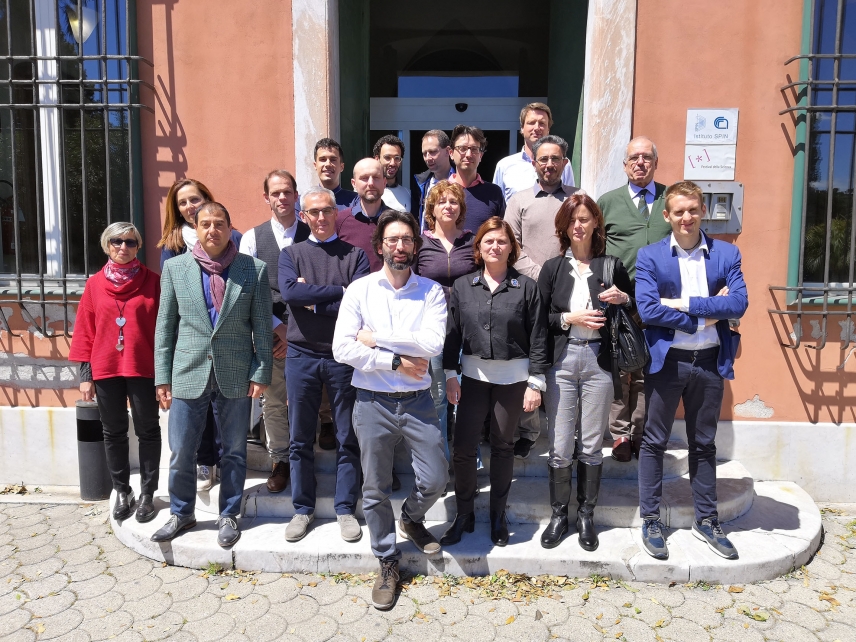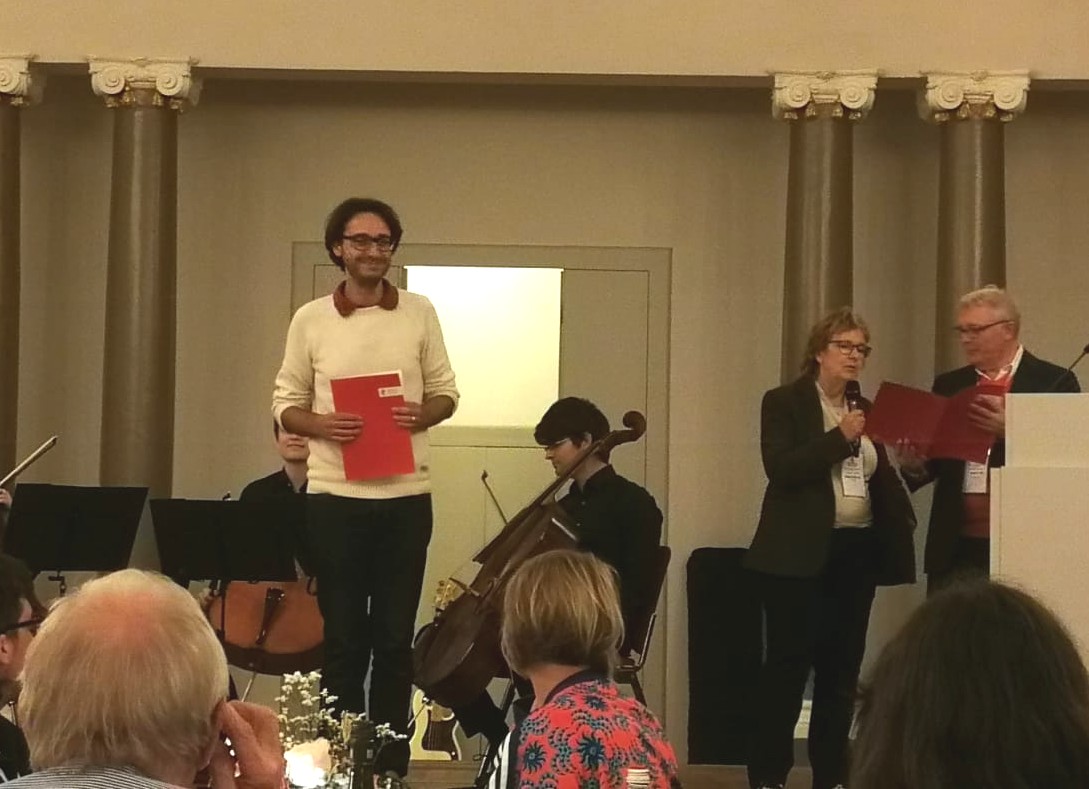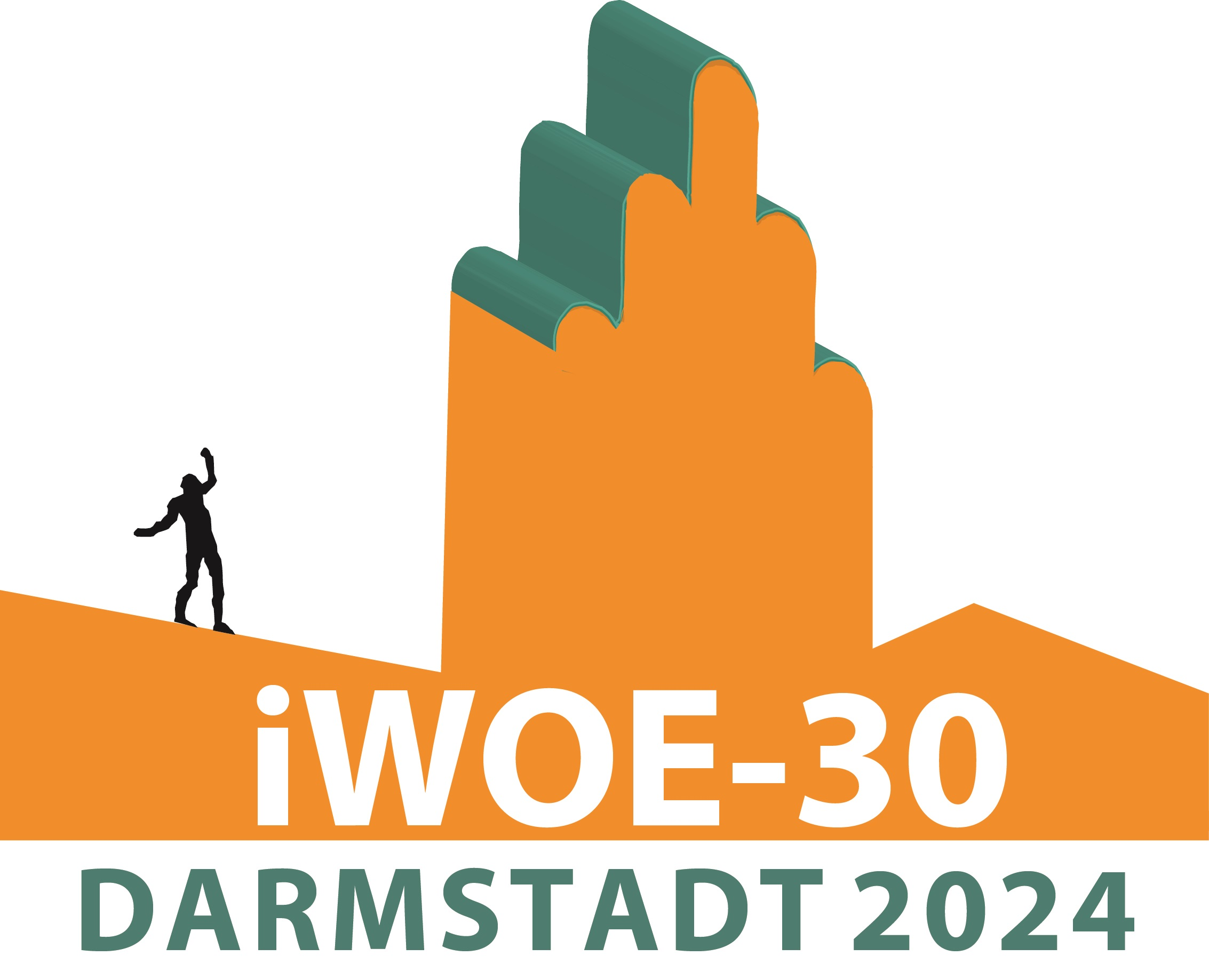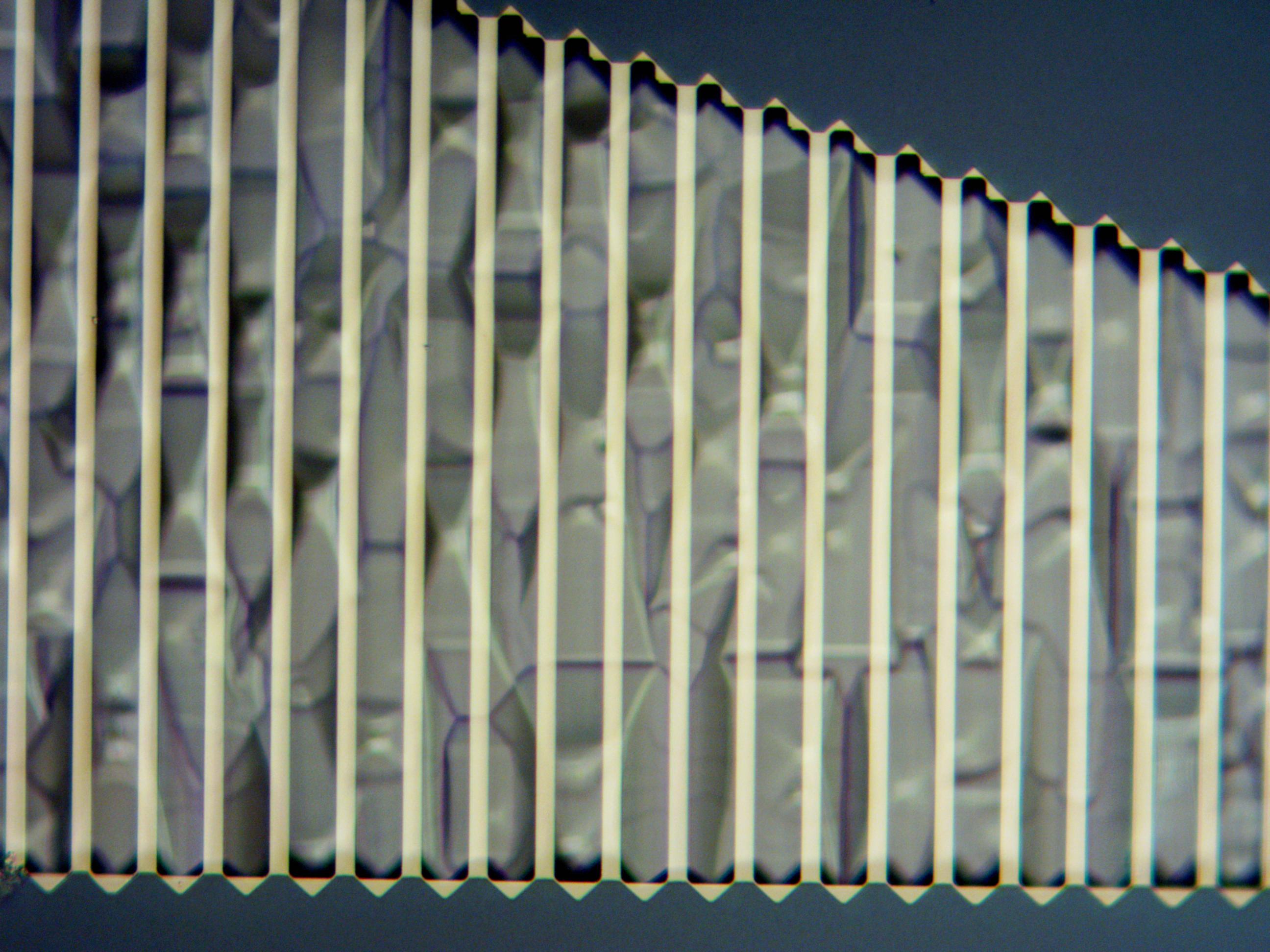The kick-off meeting of the H2020 FET OPEN project OXiNEMS has been organized at CNR-SPIN headquarters in Genova on May 6th and 7th, 2019.
The involved European groups gathered to strengthen relationships, have scientific discussions and detail the first steps of the project.The OXiNEMS project plans to develop innovative nanoelectromechanical systems (NEMS) based on multifunctional (epitaxial) transition metal oxides. The OXiNEMS team will implement ultrasensitive detectors able to measure very weak magnetic fields targeting those generated by human brain activity, of the order of tens of femtotesla.






 This project has received funding from the European Union’s Horizon 2020 research and innovation programme under grant agreement N.828784.
This project has received funding from the European Union’s Horizon 2020 research and innovation programme under grant agreement N.828784.